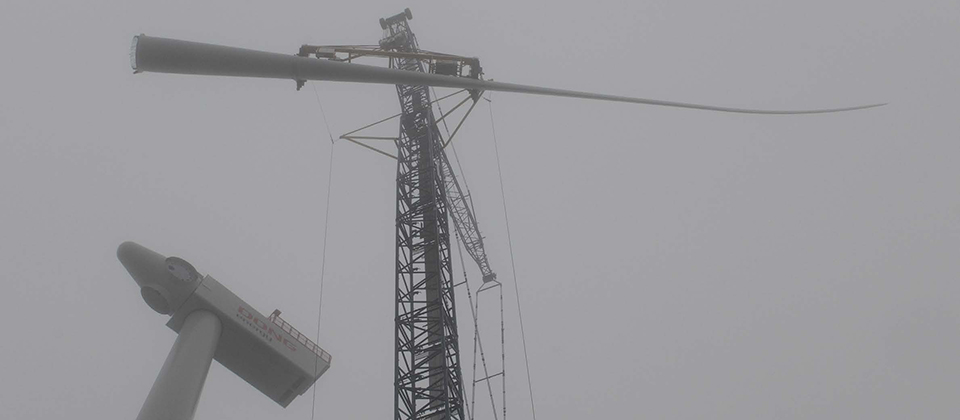
Heavy lift supervisor Gaynor Horner hails from Northern Ireland, just outside Belfast. He has been lifting around the world for the past 20 years, including lengthy periods in Oman, Dubai, and the North Sea.
These days, you’ll find him on board SEA WORKER, keeping a watchful eye (“Like a hawk”) on every lifting task, but he has also worked with SEA JACK back in 2011, and more recently with SEA INSTALLER during mobilisation in the Netherlands.
Initially trained as a rigger, Gaynor’s experience encompasses not just offshore wind installation, but also work with shipbuilding and repair, power stations and oil refineries. He has spent plenty of time offshore, much of it on oil rigs, but still enjoys being at sea and, of course, the month-on, month-off schedule offered by the job.
“One of my key roles is to lead the toolbox meeting then supervise the actual lifts, making sure that everyone sticks to the lift plan. Safety is uppermost in my mind, of course.”
For installation projects, each lift has already been engineered and planned, so adherence to the plan is essential, including agreed safety procedures. To supervise a lift, Gaynor bases himself in a prominent position on the vessel, enabling him to see as much of the lifting area as possible. But he’s always on the move, walking about quickly but calmly to check every shackle being attached, every pin going in, and that ropes don’t tangle. He likes a hands-on approach – having been used to doing the work himself, he finds it’s often best to just get in there and help to make sure things are done right.
Monitoring the weather – and making the call to lift, continue lifting or stop work – is the responsibility of the heavy lift supervisor. So Gaynor also keeps an eye on wind speeds, alert to changes, particularly rapidly escalating gusts. “You can plan lifts in terms of the mean wind speed, but you really have to be out there to make accurate, timely judgements. If there is a rapid upward trend in gusts or mean wind speed, I’ll quickly call a stop.”
There are many more lifts on Gaynor’s list, too, such as those in port or when mobilising for the next project. “My busiest time is during mobilisation, because of the number and variety of lifts. It’s different to the engineered lifts of a project. You have to think on your feet and use your experience of similar lifts in the past.”
There’s more to the job than lift planning and supervision, of course. Gaynor is also responsible for lifting equipment certification and maintenance. Assisted by the Sertica scheduled maintenance system, he checks crane maintenance, for example, following daily, weekly, monthly, six-monthly and annual procedures.
“My main concern is complacency. I’m there to keep the guys fresh and alert because they are doing lift after lift and you can easily start to do things automatically. If I see something that needs to be addressed, I try to remind them in a nice way – and I definitely avoid harsh interventions that might cause someone to panic. In fact, I prefer to intervene as little as possible, rather than bossing anyone around. Calm and easy does the job. It’s something you learn with experience.”
Like this post? Subscribe now and get notified about new content!
